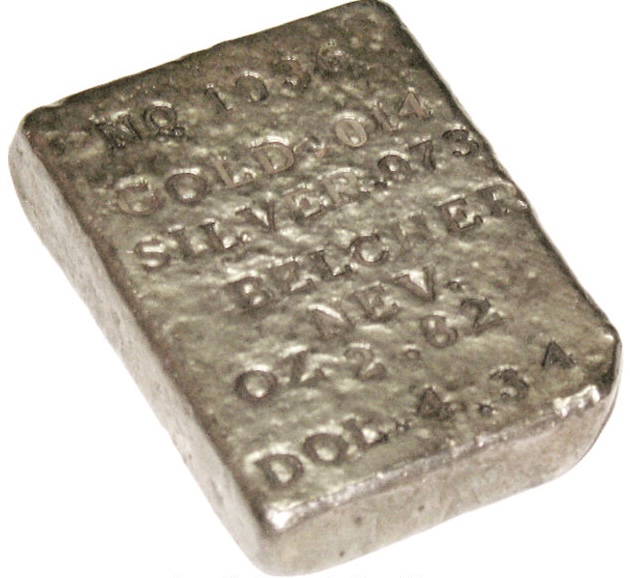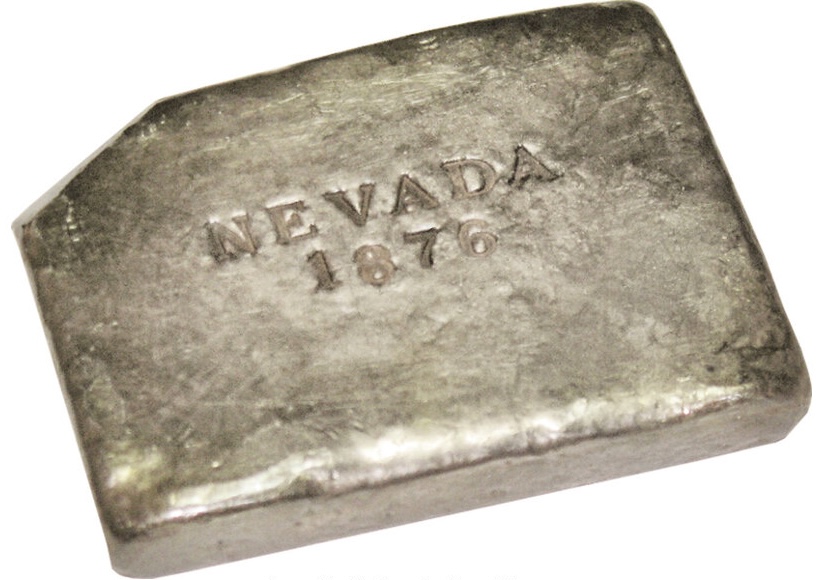2.62 oz Belcher Mine, Comstock Lode, Virginia City, 1876. Face Value: $4.34


This ingot is from the Belcher Mine, an exhibition ingot used at the Philadelphia Centennial Exposition, in which Nevada played an important role. It is the only such marked ingot surviving today, with the possible exception of uncataloged ingots in institutional collections.
Nevada began studying the possibilities of participating in the 1876 Centennial exhibition in 1873, when a select committee recommended that the state participate. Some of the mines of the Comstock Lode had just produced record bonanzas, particularly the Crown Point and Belcher, the two largest mines at the time, which both went on to produce more than $70 million combined. The committee received an appropriation of $20,000 for the exhibit, which was to erect a quartz mill and have mineral specimens from the major mines of the Big Bonanza. The appropriation for the exhibit was so great, that organizers noted that only three states had larger appropriations, Pennsylvania, Massachusetts and New York. Nevada’s exhibit was unique. A complete quartz mill was sent to Philadelphia and reassembled at the exposition. Visitors watched as ores from three Comstock mines were processed, and this ingot is the probable result of one of those runs of ore. The ore came from the Comstock Mines: the Con-Virginia, the California, the Ophir and the Belcher. It was packed in sacks and sent to Philadelphia by the Pennsylvania Railroad. The rock went into the stamps and came out in the form of powder, which was dissolved in a small stream of water that ran through a trough. The quicksilver was added and the amalgamation process took place. The mill stood in the Machinery Hall…
The ingot is individually letter punched, carries the gold and silver fineness and dollar value, $4.34. On the reverse is the designation “Nevada 1876.” An assay chip has been taken from the bottom right rear corner.
